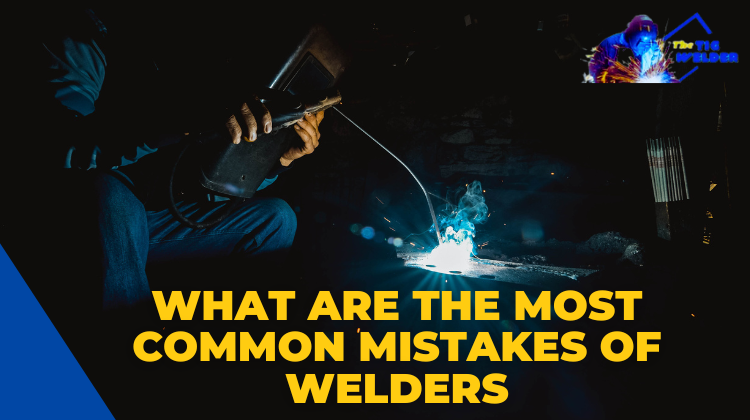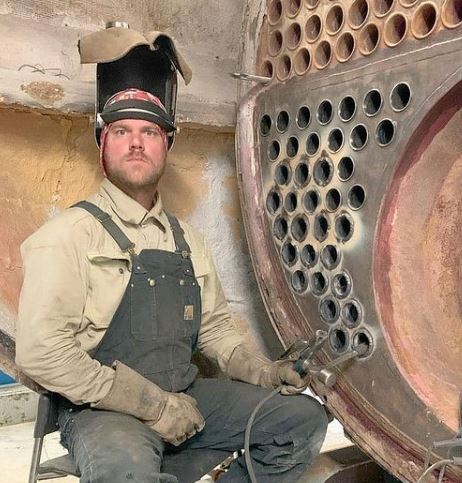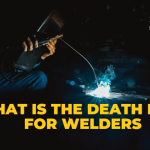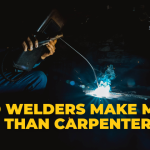Welding is a skilled trade that involves the use of heat and pressure to join metal components together. It requires high precision and attention to detail, as even small mistakes can have significant consequences.
For example, if a welder needs to properly prepare the materials or use the correct equipment and settings, the weld may need to be stronger to hold the components together. Additionally, if the welder uses the correct technique, such as holding the torch or gun at the wrong angle or using too much or too little heat or pressure, the weld may be strong or have a poor appearance.

Most Common Mistakes of Welders
Despite their skill and experience, even the most seasoned welders can make mistakes. This may be due to fatigue, distractions, or human error. Welders must be aware of their common mistakes and minimize them by being properly trained and following safety procedures.
Lack of Preparation
Lack of preparation is one of the most common mistakes that welders can make. This can include failing to properly clean or prepare the materials to be welded and not using the correct equipment or settings for the job.
Proper preparation of the materials is crucial for ensuring a strong and reliable weld. This may involve cleaning the metal components to remove any dirt, rust, or other contaminants that could weaken the weld. It may also involve preparing the surface of the metal to create a better bond, such as by grinding or chipping away any burrs or rough edges.
Using the correct equipment and settings is also important for achieving a successful weld. This includes selecting the appropriate welding process and torch or gun for the job and setting the power levels and other variables to match the thickness and type of metal being welded. Failing to do so can result in a weld that is weak or has a poor appearance.
Overall, taking the time to properly prepare for a welding job can help ensure that the weld is strong and reliable and that the finished product meets the required standards.
Not Maintaining A Steady Hand
Poor technique is another common mistake that welders can make. This refers to incorrect or sloppy welding techniques, which can result in a weak or poorly-finished weld. Some examples of the poor technique include:
Holding the torch or gun at the wrong angle: The angle at which the torch or gun is held can significantly impact the weld’s quality. Holding it at the wrong angle can result in a weld that is too shallow or too deep, which can weaken the bond between the metal components.
Using too much or too little heat or pressure: Too much heat or pressure can cause the metal to distort or become brittle, while too little can result in a weak or incomplete weld. It is important to find the right balance to achieve a strong and reliable weld.
Not maintaining a steady hand: Welding requires a high level of hand-eye coordination and a steady hand. If the welder cannot maintain a steady hand, the weld may be irregular or have a poor appearance.
By paying attention to proper technique and following best practices, welders can help ensure that they produce strong and reliable welds that meet the required standards.
Poor Joint Design
Poor joint design refers to how the metal components are joined together. It is an important factor in determining the strength and reliability of a weld, as well as the overall appearance of the finished product. Some common mistakes in collaborative design include the following:
Not properly aligning the materials to be welded: If the metal components are not properly aligned, the weld may be weak or have a poor appearance. It is important to ensure that the components are properly aligned and square to each other before welding.
Not allowing for adequate clearance or overlap: The amount of overlap between the metal components can affect the strength of the weld. There needs to be more overlap to avoid a weak weld, while too much overlap can cause the weld to be too bulky or have a poor appearance.
Not accounting for stresses or movements in the finished product: If the finished product will be subjected to stresses or movements, it is important to consider these factors when designing the joint. This may involve using special joint designs or reinforcement to ensure that the weld is strong enough to withstand the expected loads.
By carefully designing the joint and considering all relevant factors, welders can help ensure that the weld is strong and reliable and that the finished product meets the required standards.
Contamination
Contamination refers to foreign substances on or near the welded materials. These substances can weaken the weld or interfere with the welding process, leading to a faulty or unreliable weld. Some common sources of contamination include:
● Welding in dirty or poorly ventilated environments: Dust, dirt, and other contaminants can accumulate on the welded materials, weakening the weld. Welding in a dirty or poorly ventilated environment can also expose the welder to harmful fumes and gases.
● Using dirty or damaged equipment: The equipment used for weldings, such as the torch or gun, should be kept clean and in good condition. Using dirty or damaged equipment can contaminate the weld or interfere with the welding process.
To minimize the risk of contamination, welders should ensure that they work in a clean and well-ventilated environment and that their equipment is clean and in good working order. They should also follow proper safety procedures to protect themselves from exposure to harmful fumes and gases.
Inattention to Safety
Inattention to safety refers to failing to follow proper safety procedures when welding. This can put the welder at risk of injury and lead to accidents or damage to the welded materials. Some common examples of inattention to safety include:
Failing to wear proper protective gear: Welding generates intense heat and light and produces harmful fumes and gases. Welders must wear appropriate protective gear, such as a welding helmet, gloves, and protective clothing, to protect themselves from these hazards.
Not following proper safety procedures: Welding also involves using electricity and high temperatures, which can be dangerous if not handled properly. Welders must follow all relevant safety procedures, such as properly grounding the equipment and following proper start-up and shutdown procedures.
By following proper safety procedures and wearing the appropriate protective gear, welders can help protect themselves and reduce the risk of accidents or injuries on the job.
Conclusion
In conclusion, welding is a skilled trade that requires precision and attention to detail. However, even experienced welders can make mistakes, such as lack of preparation, poor technique, poor joint design, contamination, and inattention to safety. These mistakes can result in weak or faulty welds and risks to the welder’s safety. To minimize these mistakes, it is important for welders to be properly trained and to follow best practices and safety procedures. Doing so can help them produce strong and reliable welds that meet the required standards and work safely and efficiently.

It’s been years since I got into welding as a side hustle. It’s been so long since Doing All kinds of welds for business and pleasure as this is my hobby. Being in this field I have learned from hands-on-experience also came to know what gears work and what doesn’t. The Tig Welder is my own platform where I use to share my experience.






Leave a Reply